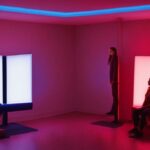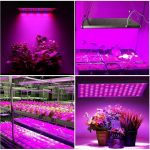Last Updated on 12 months by Francis
Seasonal affective disorder (SAD) is a type of depression that occurs when the changing seasons bring shorter days and less sunlight. One of the most effective treatments for SAD is light therapy, which involves exposure to bright, artificial light that mimics natural sunlight. But with so many different types of light therapy devices available, it can be difficult to determine which one is the best for treating SAD. In this discussion, we’ll explore some of the top light therapy options for SAD and the benefits of each.
Contents
Understanding Seasonal Affective Disorder
Seasonal Affective Disorder (SAD) is a type of depression that usually occurs in the fall and winter months when there is less sunlight. This disorder affects approximately 5% of the population and is more prevalent in women than in men. Symptoms of SAD include low mood, fatigue, irritability, and a lack of interest in activities. Although the exact cause of SAD is unknown, it is believed that a lack of sunlight disrupts the body’s natural rhythms and can cause a decrease in serotonin levels.
What is Light Therapy?
Light therapy, also known as phototherapy, is a non-invasive treatment for SAD that involves sitting in front of a lightbox that emits bright light for a specific amount of time each day. The lightbox is designed to simulate natural sunlight and can help to regulate the body’s natural rhythms, increase serotonin levels, and improve mood.
Light therapy is a non-invasive treatment for Seasonal Affective Disorder (SAD) that involves exposing the eyes to bright light for a specific amount of time each day using a lightbox that simulates natural sunlight. This treatment works by regulating the body’s natural rhythms, increasing serotonin levels, and improving mood. When choosing a light therapy box for SAD, factors to consider include the brightness of the light, the size of the lightbox, and the type of light emitted. It is important to follow the manufacturer’s instructions and consult with a healthcare professional when using light therapy for SAD.
How Does Light Therapy Work?
Light therapy works by exposing the eyes to bright light, which can help to regulate the circadian rhythms that affect sleep and wake cycles. This exposure to light can also increase the production of serotonin, a hormone that affects mood and can help to alleviate symptoms of depression. Light therapy is typically administered with a lightbox that emits 10,000 lux of light, which is approximately 20 times brighter than indoor lighting.
What Are the Benefits of Light Therapy for SAD?
Light therapy can be an effective treatment for SAD, with studies showing that it can improve mood and reduce symptoms of depression in up to 70% of people who use it. Additionally, light therapy is a non-invasive treatment with few side effects, making it a safe and effective option for those with SAD.
Choosing the Right Light Therapy
When choosing a light therapy box for SAD, there are several factors to consider. These include the brightness of the light, the size of the lightbox, and the type of light emitted.
Light therapy can be an effective and non-invasive treatment for Seasonal Affective Disorder (SAD) that involves sitting in front of a lightbox that emits bright light to simulate natural sunlight, improve mood, regulate the body’s natural rhythms, and increase serotonin levels. When selecting a lightbox, one should consider the brightness, size, and type of light emitted. It is important to use light therapy in the morning for 30 minutes to 1 hour at a distance of about 16 to 24 inches from the face.
Brightness
The brightness of a lightbox is measured in lux, with most lightboxes emitting 10,000 lux. However, some lightboxes emit as little as 2,500 lux, which may be less effective for treating SAD. It is recommended to choose a lightbox that emits at least 10,000 lux of light.
Size
The size of a lightbox is also an important factor to consider. A larger lightbox will allow for more flexibility in positioning and can provide a wider field of light. However, larger lightboxes can also be more expensive and take up more space.
Type of Light
The type of light emitted by a lightbox can also affect its effectiveness. Most lightboxes emit white light, but some also emit blue light or a combination of blue and white light. Blue light has been shown to be more effective at reducing symptoms of SAD, but it may also have more side effects, such as headaches and eye strain.
Tips for Using Light Therapy
When using light therapy for SAD, it is important to follow the manufacturer’s instructions and consult with a healthcare professional if you have any concerns. Here are some tips for using light therapy effectively:
Timing
It is recommended to use light therapy in the morning, as exposure to bright light early in the day can help to regulate the body’s natural rhythms and improve mood. However, some people may prefer to use light therapy in the evening, depending on their schedule and preference.
Duration
The duration of light therapy can vary depending on the individual and the severity of their symptoms. Most people use light therapy for 30 minutes to 1 hour each day, but some may require more or less time to see an improvement in their symptoms.
Distance
It is important to position the lightbox at the correct distance, typically about 16 to 24 inches from the face. This distance can vary depending on the brightness of the light and the size of the lightbox.
FAQs – Best Light Therapy for Seasonal Affective Disorder
What is seasonal affective disorder (SAD)?
Seasonal affective disorder (SAD) is a type of depression that occurs during the fall and winter months when there is less exposure to natural sunlight. Symptoms can include fatigue, anxiety, and a decrease in mood and motivation.
How can light therapy help with seasonal affective disorder?
Light therapy, also known as phototherapy, is a treatment that involves exposure to artificial light to help alleviate the symptoms of SAD. The light is designed to mimic the natural outdoor light that is typically reduced in the fall and winter months. Exposure to the bright light from a light therapy box is thought to stimulate the brain’s neurotransmitters and regulate circadian rhythms to improve mood and energy levels.
What is the best type of light therapy for SAD?
The best type of light therapy for SAD is a light therapy box or lamp that emits at least 10,000 lux of light. A light therapy box should be used daily for 20-30 minutes in the morning, and can be placed on a desk or table for convenient use. Some people may also benefit from dawn simulators that mimic a sunrise to help regulate the body’s circadian rhythms.
Are there any potential side effects of light therapy?
Light therapy is generally considered safe and does not have any significant side effects. However, some people may experience minor side effects such as headaches, eye strains, or irritation. These side effects are typically mild and go away on their own after a few days of use. People with certain medical conditions, such as bipolar disorder or eye diseases, should speak with their healthcare provider before starting light therapy.
How long should light therapy be used for SAD?
Light therapy should be used consistently to see optimal results. Typically, light therapy is used daily for 20-30 minutes in the morning, starting in the fall and winter months and continuing until spring. Consult with your healthcare provider about the duration of use to determine what is best for your specific needs.
How can I choose the best light therapy box for me?
When choosing a light therapy box, consider factors such as the size, brightness level, and portability. Look for a light therapy box with at least 10,000 lux of light, which is the recommended amount for SAD treatment. It’s also important to consider the size of the box and whether it can be used comfortably on a desk or table. Additionally, some people may prefer a portable light therapy device that can be used while traveling. Be sure to consult product reviews and speak with your healthcare provider about recommendations for specific products.


.jpg)




